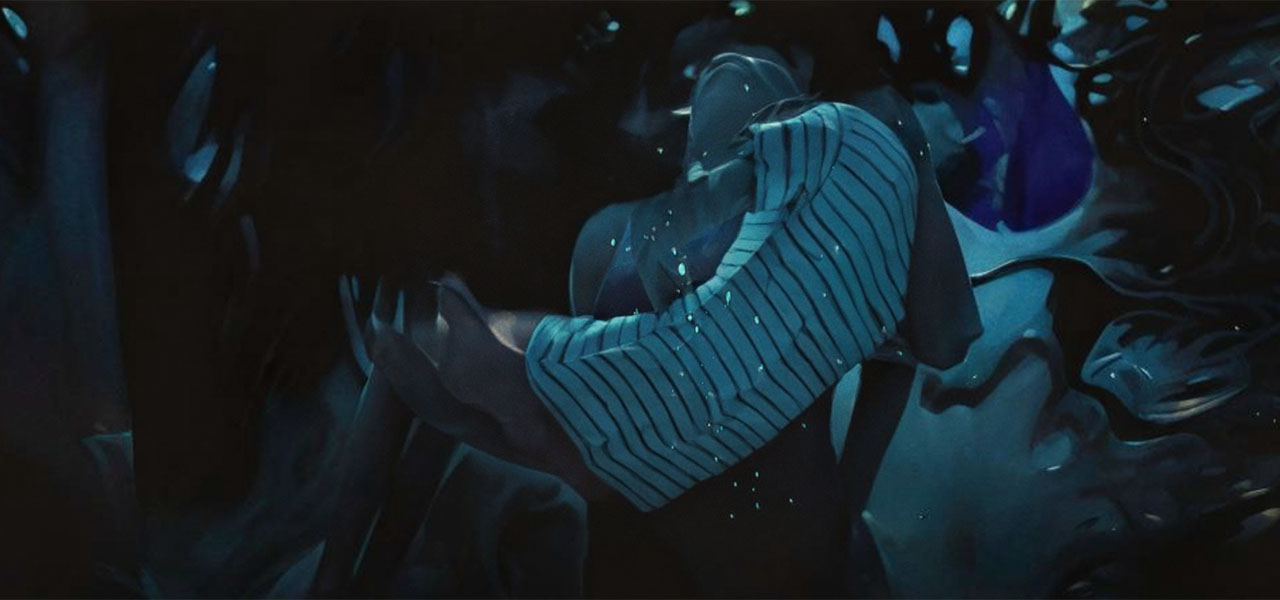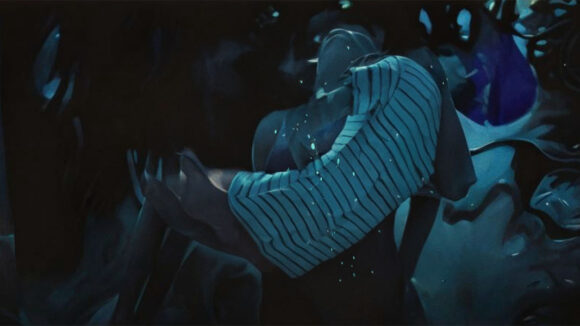

2025 Oscars Short Film Contenders: ‘A Wind And The Shadow’ Director Kris Kelly
Cartoon Brew is putting the spotlight on animated short films that have qualified for the 2025 Oscars.
Today’s film is A Wind and the Shadow from Irish filmmaker Kris Kelly. The short earned its Oscars qualification through theatrical exhibition.
As the line between reality and memory blurs, a mother confronts her fears and uncertainty, revealing a narrative of resilience and love. This journey leads to a profound moment when her daughter bravely discusses her illness in this short inspired by real events and created by BAFTA-nominated writer/director Kris Kelly. The film is co-produced by Belfast-based Out of Orbit and Enter Yes.
Cartoon Brew: You’ve mentioned in previous interviews that throughout the production process, you had long streams of teamwork mixed with your own solo sessions to keep costs down. How did you feel going between those different work settings and techniques on the way to achieving this short?
Kris Kelly: Moving between solo sessions and collaborative teamwork was always a refreshing change for me. After extended periods of solo work, I would often feel ready to collaborate, leaning on the incredible skills, professionalism, and unique approaches that others brought to the project. Those collaborations often sparked new ideas, shapes, emotions, or styles that I could then explore further in my solo sessions, allowing me to refine the film in a way that felt more personal and deeply connected to the subject. I find it incredibly fulfilling to move between these two modes of working. It’s important to me that the collaborative nature of filmmaking is evident on screen — it’s not just the vision of one person but the combined talent of a team. I’m always vocal about promoting and celebrating the contributions of everyone involved.
What was it about this story or concept that connected with you and compelled you to direct the film?
The subject felt incredibly profound to me, and I was deeply inspired by the strength and resilience I witnessed in others. I wanted to share that sense of inspiration — the kind of strength that often goes unnoticed but deserves to be highlighted. It felt like a story that needed to be told, one that could resonate with people and offer a glimpse into the beauty of human perseverance and the support we give each other during challenging times.
What did you learn through the experience of making this film, either production-wise, filmmaking-wise, creatively, or about the subject matter?
As a filmmaker I’ve always been fascinated by the challenge of using animation to explore real and profound subjects. On this project I learned to be more agnostic in my approach to mediums, focusing on finding the right way to communicate an idea rather than adhering to conventional definitions of animation or live-action. I greatly admire filmmakers who move seamlessly between these mediums or blend them to create something entirely new, and this film pushed me to think about how I could confidently do the same in my own work.
The profound nature of the subject, combined with the constrained budget and production challenges, forced me to truly consider what I wanted to explore as creative. It taught me the importance of trusting my instincts, being confident in my creative language, and using animation as a tool to enhance storytelling rather than being limited by traditional rules or industry expectations. This experience ultimately gave me greater clarity about my voice as a filmmaker and reinforced my belief that the medium should always serve the story, not the other way around.
Can you describe how you developed your visual approach to the film, why you settled on this style/technique, and how this shaped the final work?
My visual style has been developed over years of exploring the balance between tangible, real-world techniques — textured, layered imagery — and the use of computer technology to produce films within budget constraints. Striking this balance has been a long journey, driven by the need to adapt the approach to fit the emotional tone and subject matter of each project.
A key focus of my style is the human face, particularly expressions and the details around the eyes. I noticed that in peripheral areas of the frame — places less likely to draw the viewer’s attention — I could use more automated or cg techniques without losing the emotional impact. However, for key features like faces or motions that need to register deeply, I invest time in hand-crafting these elements. This interplay between automation and manual work allows the imagery to feel alive in a unique way.
My process involves reviewing the film, letting it settle, and then revisiting areas that lack organic, real moments. I return to these areas with techniques that are looser, more expressive, and more painterly. This approach is tied to my belief that animation can offer a certain honesty and openness, especially when telling stories about real subjects. By avoiding overly rigid or concrete shapes and forms, I invite the audience to bring their own interpretations to the work. This balance between techniques amplifies the emotion in the work, allowing me to create something that feels both authentic and achievable within the realities of production constraints.
